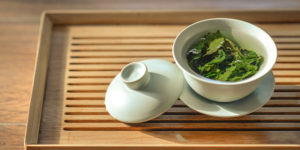Tea is loaded with tradition. And for every type of tea, there are as many different traditions for enjoying a simple pot. You’ve probably even contributed to this rich tradition as you have discovered your own favorite brew and the best way to prepare and enjoy it. However, take a moment to drink in a different tradition that is almost as old as the the consumption of tea itself.
History
Tea in Japan is not quite as old as tea in China, but it still dates back to the 9th century when a Buddhist monk returned from a trip to China. Legend says that after the monk shared it with the Emperor in the year 815, tea plantations started developing as early as the year 816. Not long after that, Chinese author, Lu Yu wrote The Classic of Tea, which had a very significant influence on the Japanese tea ceremony.
By the 12th century, the tea ceremony adapted a style of preparation known as “tencha,” which uses matcha, today’s popular powdered green tea called matcha. The powder is placed in a bowl, hot water is added, then the mixture is whisked together. It was either served as thin tea with a light snack for simple hospitality moments, or as thick tea included in a several course meal for serious entertaining.
Transformation and Ritual
Tea in Japan was very closely associated with Zen Buddhism as it was introduced, and quickly developed as a transformative practice for those who partook in the ceremony. Part of drinking tea was focusing on the inner, spiritual life and qualities such as humility, restraint and simplicity. Exterior life and environment was also a part of enjoying the ceremony. Tea began to take on its own aesthetic quality in the way it was prepared and consumed.
A special set of equipment is used to prepare the tea including a tea bowl, whisk, scoop, towel and caddy. At th same time, guests are seated in a particular way – on a tatami-floored mat. The host or hostess is even trained in a special school to prepare and serve the tea. Typically matcha, the powdered form of tea, is served, but some ceremonies may use a Japanese sencha. Delve deeper into this rich history of tea in Japan.
You may be well aware of your favorite type of tea and have a few of your own rituals as you prepare to enjoy it, but are you tempted to try a cup of Japanese green tea? It may just enhance the practices that surround your prized cuppa.

